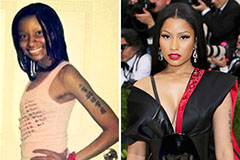The annals of expert fumbling are replete with renowned icons, tangible representations of magnificence, and testimonies to the devotion and expertise of its champs. Among these cherished artifacts, couple of resonate with the very same level of splendour and recognition as the WWF Big Eagle Belt. This champion title, with its distinctive layout and the lineage of fabulous figures who held it up, inhabits a significant chapter in the history of the World Wrestling Federation (WWF), now referred to as copyright. To truly appreciate its relevance, we have to look into its beginnings, advancement, the titans who wore it, and the sustaining tradition it continues to keep in the hearts of wrestling enthusiasts worldwide.
The WWF Big Eagle Belt had not been merely a prize; it was a declaration. Presented in 1988, it marked a departure from the previous, smaller sized championship styles, introducing an era of more aesthetically imposing and prestigious equipment. The name itself, often reduced to simply the " Huge Eagle," appropriately explained its striking appearance. Defined by a big, elaborately thorough eagle emblem at its facility, wings outstretched in a sign of supremacy, the belt showed an mood of power and value. Flanking the central plate were smaller side plates, typically including the WWF logo and personalized spaces for the champ's name. The abundant, dark leather strap better accentuated the gold-plated greatness of the main style, making it instantaneously well-known and desired.
The intro of the WWF Big Eagle Belt coincided with a period of substantial development and mainstream appeal for the WWF. Under the management of Vince McMahon, the business was changing into a international entertainment phenomenon, sustained by larger-than-life characters and compelling stories. The brand-new champion layout functioned as a visual keystone of this period, held by the leading stars that headlined sold-out fields and captivated millions viewing in your home.
The lineage of champions that held the WWF Big Eagle Belt reads like a that's who of wrestling nobility. The inaugural champion was none besides "Macho Man" Randy Savage, a flamboyant and immensely skilled entertainer whose power set the stage for the title's distinguished future. Following Savage, a sequence of famous numbers engraved their names into the belt's heritage. Hunk Hogan, the supreme symbol of 1980s wrestling boom, held the title numerous times, even more solidifying its significance as the peak of WWF success. His larger-than-life persona and the iconic photo of him hoisting the WWF Big Eagle Belt high over his head are indelibly connected in the minds of fans.
The 1990s saw the WWF Big Eagle Belt proceed its power as the top prize, decorating the waistlines of a brand-new generation of battling symbols. The Ultimate Warrior, with his extreme power and link with the audience, added his distinct chapter to the title's history. Bret "The Hitman" Hart, a technological fumbling master, brought a different type of stature to the champion, showcasing the in-ring quality it stood for. Shawn Michaels, the "Heartbreak Child," with his charm and athleticism, further boosted the title's relevance throughout his memorable regimes.
Each champ brought their very own distinctive design and personality to their period with the WWF Big Eagle Belt, adding wwf big eagle belt to its evolving story. Title changes commonly served as pivotal moments in WWF stories, fueling rivalries and exciting audiences with dramatic confrontations. The aesthetic phenomenon of the championship being safeguarded in centerpiece suits on pay-per-views better cemented its standing as the utmost reward in professional wrestling.
Past the private champions, the WWF Big Eagle Belt itself became an important part of wrestling iconography. Its look on advertising materials, goods, and video game covers strengthened its place in pop culture. The view of the belt draped over a champ's shoulder became a globally acknowledged icon of success in the wrestling world.
As the WWF transitioned into the Perspective Period in the late 1990s, the WWF Big Eagle Belt underwent a subtle redesign, commonly described as the "Winged Eagle" belt by enthusiasts as a result of the more pronounced wing layout of the main eagle. This updated variation continued to stand for the WWF Championship throughout a period of extraordinary popularity for the firm, held by famous numbers like Rock Cold Steve Austin and The Rock.
Ultimately, the WWF Big Eagle Belt layout was retired in the late 1990s, making way for a new, a lot more modern-day champion layout. However, its impact on the background of professional fumbling continues to be obvious. The WWF Big Eagle Belt is lovingly kept in mind by fans as a icon of a golden era in fumbling, a time when larger-than-life heroes fought for the best prize, stood for by this wonderful piece of hardware.
The tradition of the WWF Big Eagle Belt expands beyond its physical existence. It stands for an age of storytelling, personality advancement, and in-ring activity that mesmerized a worldwide audience. It functions as a suggestion of the epic figures who led the way for the fumbling landscape we understand today. Collectors and followers alike hold reproductions of the WWF Big Eagle Belt in high regard, a concrete web link to a treasured past.
In conclusion, the WWF Big Eagle Belt was more than simply a champion title; it was a icon of quality, a representation of the desires and desires of expert wrestlers, and a aesthetic foundation of a transformative era in battling background. From its striking style to the fabulous champions who proudly brought it, the WWF Big Eagle Belt stays an enduring icon, permanently engraved in the cumulative memory of wrestling followers as a testimony to the splendour and enduring allure of the sport. Its tale is an integral part of the rich tapestry of wrestling lore, a chapter that remains to be celebrated and born in mind with a sense of fond memories and respect.
 Scott Baio Then & Now!
Scott Baio Then & Now! Mary Beth McDonough Then & Now!
Mary Beth McDonough Then & Now! Barbara Eden Then & Now!
Barbara Eden Then & Now! Nicki Minaj Then & Now!
Nicki Minaj Then & Now! The Olsen Twins Then & Now!
The Olsen Twins Then & Now!